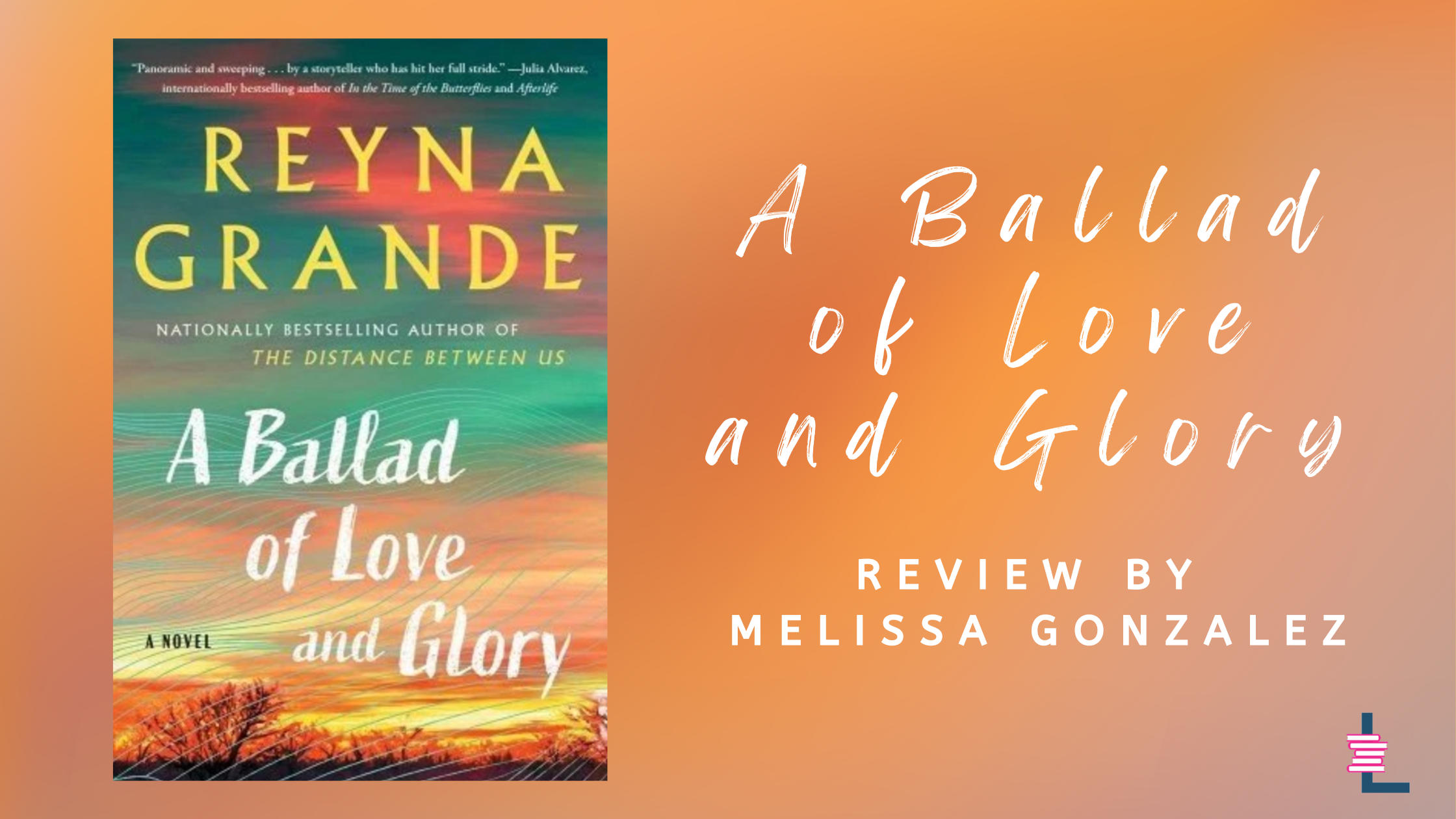Book Review: River Woman, River Demon by Jennifer Givhan | October 4, 2022
From the very beginning, River Woman, River Demon had this reviewer guessing and investigating — I mean, a psychological thriller based in New Mexico with a strong Chicana protagonist that practices curanderisma*? Yes, please. Written by award-winning Mexican-American and Indigenous author, Jennifer Givhan, this book was fulfilling all my antsy-continued-NYC-COVID-days-read-needs.
Givhan’s protagonist, Eva Santos Moon, particularly strikes a chord. There is a relatability through her internal struggle of authentically knowing her craft (the brujería and her artistry, if we should even think of those separately,) her culture, and, of course, herself — we’re all just doing our best, am I right?
As I’m introduced into Moon’s world, I become, dare I say it, bewitched. I’m incredibly charmed by Eva’s bold and magickal disposition, hers x’s, and the bond she has with the spiritual, especially through her partner, a local university professor and well-respected root worker.
Once settled in and ready for the ride, Givhan throws the reader through a reckoning which, completely devastates the family’s New Mexico ranch — Eva’s husband has been accused of murder … and on their actual property.
What follows next and also precedes, is a suspenseful investigation into not only her husband’s potential crimes, but into Eva’s. Take it from the title, fam, the river plays a major character in this book, with ghosts from the past utilizing its energy to connect with Eva. But why? Who’s to blame? Who…what is the river demon?
A suspenseful page turner, River Woman, River Demon is perfect for those who find themselves questioning their agency in uncertain times and it’s especially for those looking for a little bit of extra spiritual support and cultural empowerment. Personally, I felt that reaching this book’s cathartic conclusion was my own much-needed literary limpia*.
Note: This review is based on an early uncorrected proof.
*curanderisma: Based in Latin America and the United States, curanderisma blends religious beliefs, faith, and prayer with the use of herbs, massage, and other traditional methods of healing.
*limpa: spiritual cleansing ritual in Mexican and Mexican-American culture.
Author Q & A
Chelsea Villareal (CV): As someone with Rio Grande Valley ancestral roots, I loved digging into your Southwestern magickal mystery! What made you want to write a brujerîa thriller?
Jennifer Givhan (JG): In many ways, this book is a protection spell written from experiences where my family’s semblance of safety became torn and encroached upon by an interwoven spider’s web of systemic oppression and violence, personal hauntings and trauma, and choices we made as a result. As folk magick practitioners, Eva and Jericho in RIVER WOMAN, RIVER DEMON are tested individually and together, although my focus for this particular book remains closely on Eva, a mother whose self-worth and mettle are tested and whose unreliable narration we glean in order to, I hope, better empathize with imperfect and thereby endearingly human mothers.
Brujería has too long been seen as the source of darkness, brujas, witches, and misunderstood women as the malevolent forces to be fought. In subverting the mainstream narrative for the point of view of a family and mother of color, I wanted to turn the tables and show how the brujería, the magick and spirituality and worldview that it stems from, is neither good nor evil in and of itself, that shadow plays an integral part in finding the light, and that women of color (and in Eva’s case, a Latina and indigenous woman) can kick some serious ass and right major wrongs. But I also didn’t shy away from the horror and trauma, nor gloss over the necessary shadow work and duende integral to finding one’s truths and using it to fight injustice in all its forms.
CV: Did you do a lot of research for the book? Or was curanderisma something that you grew up with?
JG: My familial practices formed the bulwark of the brujería in the novel, but I adore researching and reading nonfiction to inform and uplift my own work, so I've certainly been informed by research as well. Most helpful to my understanding of hoodoo, beyond my husband’s practice, were the books by Stephanie Rose Bird. She’s written several illuminating volumes I highly recommend, including 365 Days of Hoodoo, which offers one piece of advice/aspect of a ritual or fixing per day, leading toward a larger body of knowledge and praxis that follow the seasons, and I found this book incredibly buoying, like she was with me each day, guiding me on my journey. Witchery by Juliet Diaz is another that I pored through again and again, early on my own bruja’s path, and even now, I’ll return to it for the wisdom of my bruja hermana I found in its pages.
I think, at this point in our (insert enraging adjective of your liking) year 2022, we’re all feeling a bit disconnected from our magickal roots. Any advice to readers looking for empowerment? What would you say readers can gain from knowing your strong Chicana protagonist, Eva?
JG: One of the most integral aspects of brujería and witchcraft to own my life is the cyclical nature of all things, spirit and material. The lessons we need to learn will keep coming to us again and again, and they’re not always something to fear or distrust. In the beginning of RIVER WOMAN, RIVER DEMON, Eva is terrified by the idea that “Nothing comes we haven’t conjured or called one way or another.” But this phrase transforms and takes on a completely new meaning by the novel’s end. Still, she’s learning lessons; still, she is calling things to herself from her past. And yet, because of her willingness to travel through the dark night of the soul, la noche oscura del alma, and do battle with the duende in the underbelly, she is changed utterly, and so she’s more able to recognize the lessons and their teachers coming to her; with this recognition comes understanding and respect. We leave Eva not at the end of her journey of brujería, but, really, at the beginning. We believe that she is now solidly on the path she was always meant to traverse, and that’s what we can carry with ourselves back into our lives. The journey doesn’t get easier, but we recognize, finally, that we are stronger. Brujería isn't about calling something external but recognizing our inner strength that has already built a stronghold within and surrounding us.
Jennifer Givhan, a National Endowment for the Arts and PEN/Rosenthal Emerging Voices fellow, is a Chicana and indigenous novelist, poet, and transformational coach. She is the author of Jubilee, which received an honorable mention for the 2021 Rudolfo Anaya Best Latino-Focused Fiction Book Award, and Trinity Sight, winner of the 2020 Southwest Book Award. She has also published four full-length poetry collections and her honors include the Frost Place Latinx Scholarship and the Joy Harjo Poetry Prize. She raises her children in New Mexico.
Chelsea P. Villareal (she/her) is a Queer Mexican American media strategist from PDX. She holds a BUPA in Political Science & Media Studies from Portland State University and recently completed her Master’s in Communication & Education at Columbia University. Her passions focus on participatory cultures, civic imagination, speculative storytelling, and intersectional Latinx identity representation — across all media. She proudly works on the marketing team at Schell Games and at We Need Diverse Books as their Senior Program & Partnerships Manager.










































































